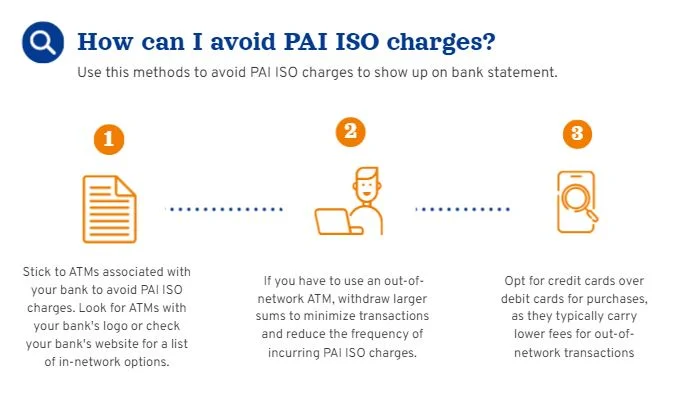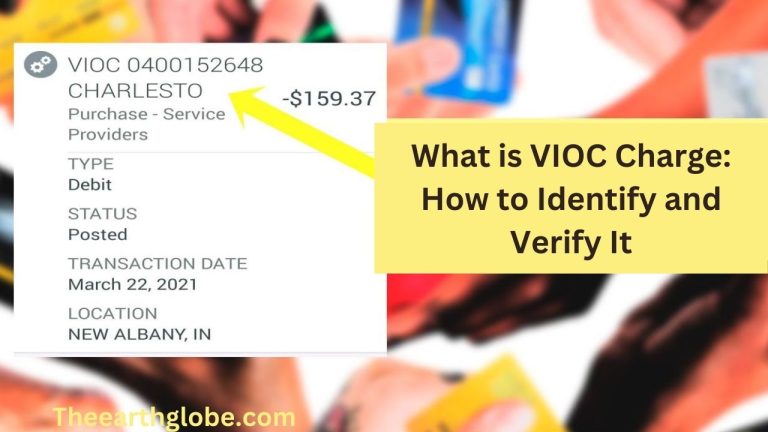Why PAI ISO Charges Appear and How to Handle Them
Introduction to PAI ISO
PAI ISO, known as Payment Alliance International Independent Sales Organization, often appears on bank statements, causing confusion. Founded in 2005, Payment Alliance International (PAI) manages over 75,000 ATMs across the U.S. Understanding PAI ISO charges is essential for managing your finances effectively. These charges typically appear for ATM withdrawals or merchant transactions processed by PAI.
Why PAI ISO Appears on Your Bank Statement
Common Scenarios for PAI ISO Charges
PAI ISO charges commonly occur during out-of-network ATM withdrawals. Using ATMs outside your bank’s network often incurs higher fees. Additionally, PAI ISO charges appear when completing transactions at merchants using PAI’s processing services.
Understanding the Nature of These Fees
PAI ISO fees help cover the costs associated with processing transactions and maintaining payment systems. These fees vary depending on the bank’s policies and the specifics of the transaction.
Decoding PAI ISO Charges
Typical Descriptions on Bank Statements
PAI ISO charges may appear under various descriptions, such as “PAI ISO ATM Withdrawal” or “Payment Alliance International”. These descriptions help identify the source of the fee.
Variations by Bank and Region
The exact wording of PAI ISO charges can vary depending on your bank and location. It’s important to familiarize yourself with how these charges appear on your statement.
Impact of PAI ISO Charges
Cost Implications for Users
PAI ISO charges typically range from $2 to $5 per transaction. Frequent use of out-of-network ATMs can lead to significant fees over time.
Frequency and Amount of Charges
The frequency and amount of PAI ISO charges depend on your transaction habits. Regular use of PAI-operated ATMs or services will result in more frequent charges.
Also read: WUVISAAFT Charge Explained
How to Identify PAI ISO Charges
Steps to Verify Charges
To identify PAI ISO charges, review recent transactions for any ATM withdrawals or merchant purchases processed by PAI.
Contacting Your Bank for Clarification
For more details, contact your bank or PAI’s customer service. They can provide specific information about the charges and help clarify any uncertainties.
How to Avoid PAI ISO Charge
Alternative Payment Methods
To avoid PAI ISO fees, use ATMs affiliated with your bank. This reduces or eliminates out-of-network fees.
Best Practices for Minimizing Fees
- Use Bank ATMs: Always choose ATMs within your bank’s network.
- Plan Withdrawals: Withdraw larger amounts less frequently to minimize the number of transactions.
Managing PAI ISO Charges
Monitoring Your Spending
Regularly monitor your bank statements to track PAI ISO charges. This helps you stay on top of your spending and avoid unnecessary fees.
Using Financial Management Tools
Utilize online banking tools and financial apps to get real-time alerts on transactions. This helps you keep track of any PAI ISO charges immediately.

What to Do If You Don’t Recognize a PAI ISO Charge
Steps to Verify and Report Unauthorized Charges
If you find an unfamiliar PAI ISO charge, verify it against your transaction records. Contact your bank to report any unauthorized charges.
Fraud Prevention Tips
Regularly check your bank statements and use secure ATMs to prevent fraudulent charges. Be cautious with your card details to avoid unauthorized transactions.
The Role of PAI ISO in Financial Transactions
PAI ISO plays a crucial role in financial transactions, acting as an intermediary between ATMs, card networks, and banks. This helps ensure smooth processing of transactions, whether for cash withdrawals or merchant payments. Understanding this role can help users grasp why these charges appear.
How PAI ISO Helps Prevent Fraud
PAI ISO collaborates with law enforcement to prevent ATM fraud. They use advanced security measures and real-time reporting to detect and prevent unauthorized transactions. This collaboration helps protect users from potential financial losses due to fraudulent activities.
Common Mistakes Leading to PAI ISO Charges
One common mistake that leads to PAI ISO charges is using out-of-network ATMs without realizing the associated fees. Another mistake is not monitoring bank statements regularly, which can result in unnoticed and accumulated charges. Awareness of these mistakes can help avoid unnecessary fees.
Benefits of Regularly Monitoring PAI ISO Charges
Regularly monitoring your bank statements for PAI ISO charges can help you catch unauthorized transactions early. This practice also helps you understand your spending habits and identify areas where you might reduce fees by changing your transaction methods.
Future Trends in PAI ISO and Digital Payments
The landscape of financial transactions is constantly evolving, with digital payments becoming more prevalent. Future trends may see changes in PAI ISO charges as new payment technologies and regulations emerge. Staying updated on these trends can help you manage your finances more effectively.
Frequently Asked Questions About PAI ISO
Are PAI ISO Charges Refundable?
Typically, PAI ISO charges are non-refundable. However, if an error occurs, contacting your bank may help resolve the issue.
How to Dispute PAI ISO Charges
If you believe a PAI ISO charge is incorrect, initiate a dispute with your bank. They will investigate and may reverse the charge if it is unauthorized.
Common Misconceptions
Many people confuse legitimate PAI ISO charges with fraudulent ones. Understanding the nature of these fees helps in identifying legitimate transactions.
Read to know about Tiktok Shadow Bans
Conclusion
Understanding PAI ISO charges is crucial for effective financial management. By familiarizing yourself with the reasons behind these fees and knowing how to manage them, you can avoid unnecessary charges and maintain better control over your financial activities. Regularly monitoring your account statements and being proactive in addressing any discrepancies can help ensure you’re not paying more than necessary for your transactions. By following the tips outlined in this article, you can manage PAI ISO charges more effectively and safeguard your finances.
Understanding the detailed breakdown, impact, and methods to avoid or manage PAI ISO charges can empower you to handle your financial transactions more effectively. Always stay proactive in monitoring your bank statements and be ready to act if you spot any irregularities.







